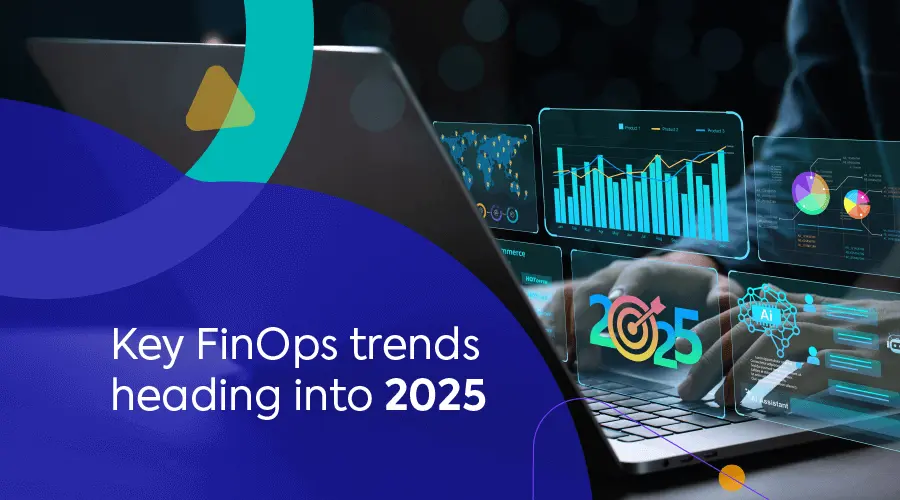
Picture this: A chic Barcelona seaside hotel, gusty autumn winds, endless tapas, and the Rioja flowing. Could there be a better setting for a FinOps conversation?
That was the setting for FinOpsX Europe! It brought together 500 practitioners from EMEA, APAC, and even LATAM. Everyone was in the mood to learn and interact: exchange ideas, share challenges, and find solutions. Here’s a peek at the hottest discussion topics.
Topic 1: Should we decentralize FinOps?
Many attendees reported that when they assumed their FinOps role, they found that many business units had their own cloud budgets, and some were even undertaking cost reduction initiatives. Decentralizing cloud budgeting could be a game-changer for engaging engineering teams in FinOps practices. Why? Because when each cost center owns its cloud budget, they can keep the savings they generate and decide how to reinvest those funds. This gives engineers a real incentive to stay focused on driving cloud efficiency.
But decentralizing cloud budgets alone isn’t always enough to encourage engineers to participate in their organization’s FinOps culture. For this to work, the organization’s FinOps tooling array must be engineer-friendly too:
- Infrastructure optimization must be a codable process, so engineers can easily automate, scale, modify, and recover it if accidentally deleted,
- it should be easy to accurately allocate costs, so that engineers can fully trust it,
- and engineers need visibility and analytics to easily see how cloud costs are generated so they can identify waste and make the right adjustments to reduce or ideally eliminate that waste.
Topic 2: When should we progress from “build” to “buy”?
At FinOps XE, many organizations expressed a preference for homegrown FinOps solutions due to EU privacy and security regulations and concerns.
However, over time, these organizations found that most home grown projects failed to deliver the cost and resource optimizations they anticipated and are now seeking out vendor solutions as they mature their FinOps practices. Many FinOpsX participants undertake one such procurement project each year—and for many, 2025 will be the year of automated optimization. Topic 3 will reveal why.
Topic 3: “Optimization” and “empowering engineers”: I don’t think it means what you think it means
“We’re continuously optimizing once a month.”
“We scaled our FinOps practices by tasking engineers with finding savings.”
These statements illustrate that many FinOps teams are just scratching the surface of their cost and resource optimization potential. And, unintentionally, overwhelming their engineers with manual tasks they weren’t hired to do—creating frustration and burnout.
FinOps teams aren’t to blame here. They do their best with the resources they have. This is where 3rd party solutions can step in to increase the impact of the FinOps teams’ time and energy.
At Spot, things are only “continuous” and “scalable” when they involve robust, intelligent automated cost, and infrastructure optimization. Our goal is to reduce the manual work around cost and infrastructure optimization, so engineers can focus on coding, while FinOps teams can focus on finding new ways to maximize the value of cloud investment.
Topic 4: How FinOps teams can impact strategic business decisions
Unit economics and KPIs generated significant interest at FinOpsX Europe. Attendees were eager to learn how to calculate and apply these metrics to their own processes. Here are some of the noteworthy points made:
- Unit costs are not a monolith. After you define what your “product unit” is, you must work from the bottom-up to identify and quantify all the services that helped create it. Then, you isolate the individual cost of each cloud service: how much is one compute hour? How much is one database query? How much is one IDP transaction? And how many of each are required to produce one product unit?
- Unit economics should determine a product’s pricing model. Unit economics help identify your product’s cost drivers. These should also be the basis for your product’s pricing model (which also makes them the revenue drivers). A mismatch between cost and revenue drivers can result in losses. Sometimes it only takes one anomaly. For example, if a single app user can generate massive cloud costs to the vendor, but the pricing is based on the number of seats, there is a mismatch between cost and revenue drivers. In any such case, organizations must reassess their pricing models to ensure ongoing profitability.
- Explore CPI as a quick, executive-friendly ratio. Cost Performance Index (CPI) is a project management metric that reflects adherence to budget throughout the project. In the context of FinOps, it can help assess the impact of FinOps efforts by indicating non-forecasted savings. For example, a CPI of 1.05 indicates an additional 5% savings compared to the original budget. Such savings might be the result of using spot instances beyond anticipated savings, such as commitment discounts that are already included in the budget.
Topic 5: How FinOps (really) fuels sustainability goals
The European Green Deal aims to make Europe the first carbon-neutral continent. All large companies are now required to disclose their impact on the environment. No surprise then that measuring and reducing the cloud’s carbon footprint was another hot topic at FinOpsX Europe.
It is clear that sustainability should be integrated into each FinOps phase: inform, optimize, and operate. However, this raised some questions:
- Precise measurement of cloud emissions—carbon footprint measurements based on cloud cost are incomplete, as cloud cost is also influenced by electricity prices, not just consumption.
- Making emission data actionable—if sustainability data is retroactive, it’s hard to make accurate determinations around future changes. Real-time, granular emission data is required.
- Scaling sustainably—Participants would like to see solutions that prioritize energy-efficient instance types among the available cost-effective options.
Topic 6: The visibility-automation tradeoff
Even in the largest organizations, FinOps teams are often still small. As a result, these teams must prioritize their efforts.
In cloud-native companies, FinOps is often led by DevOps engineers, and they typically focus on infrastructure automation first, while visibility and managing discounted commitments might lag.
Whereas a company with a legacy IT that is now migrating to the cloud may be led by a more formal FinOps team who focus on building out the tooling and processes to gain the necessary visibility, while rightsizing and terminating wasteful resources is a secondary priority and handled manually.
These disparity in maturity and processes made me see the great advantage of FinOps solutions that deliver a broad array of capabilities that address the multiple FinOps domains—they can meet organizations wherever they are and help them advance to the next phase on their FinOps journey. A solution with the greatest potential is likely one that integrates visibility with automated actions to optimize both costs and resource consumption.
What is your #1 FinOps priority in 2025?
FinOpsX Europe inspired many worthy ideas and projects for the coming year—all with the potential to expand FinOps’ impact beyond cloud cost management and optimization. Click the links to see how Spot can help to:
- Foster a better partnership with engineering teams by recommending automated optimization solutions.
- Protect our planet by eliminating waste and implementing a strategy to reduce cloud-related CO2 emissions.
- Establish metrics that may help FinOps and leadership better understand the impact of FinOps efforts and set tangible goals, like CPI or Effective Savings Rate (ESR).
To start optimizing today, open your free Spot account in just 3 minutes. See tutorial.

